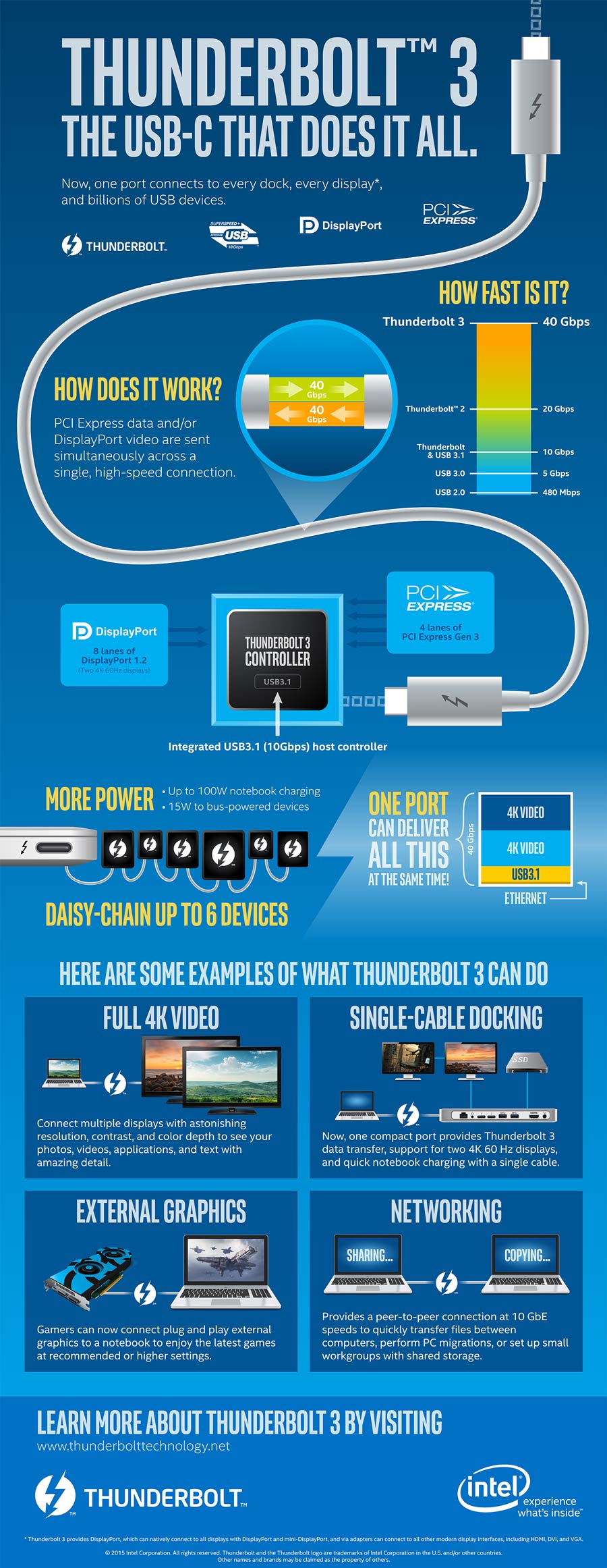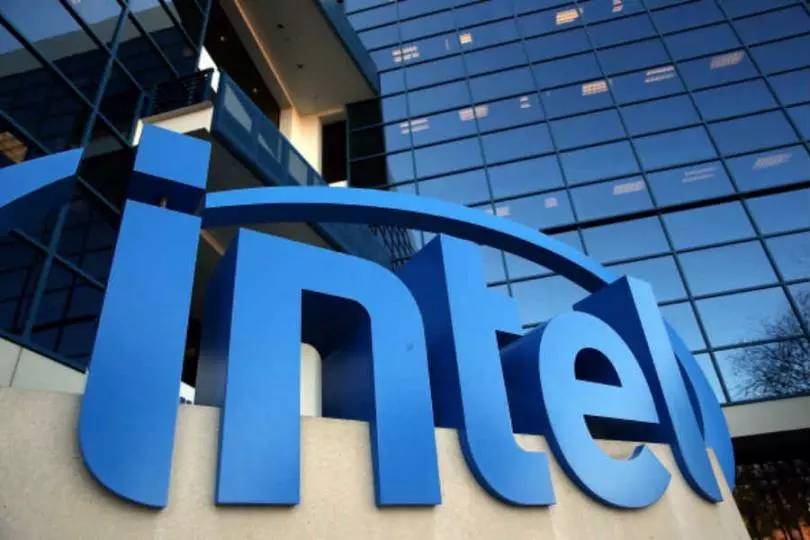The “USB-C that does it all”, officially known as Thunderbolt 3 from Intel, is going to be made royalty-free by its creator, Intel Corp. Thunderbolt 3 is essentially a high-speed interface that brings four times the bandwidth to what USB-C is currently capable of, is 8x faster than USB 3.0 and provides 4x more bandwidth than HDMI 1.4.
Thunderbolt 3 is capable of data transfer speeds of up to 40Gbps, and up to 100w for power transfer.

Intel wants the whole world to adopt Thunderbolt 3, and to that end, it has outlined a two-pronged plan.
First of all, Intel will integrate Thunderbolt 3 into its future CPUs. Right now, Alpine Ridge chips are available, but they have to be added separately to the chipset. Even the high-end Z270 Kaby Lake chipset released last year doesn’t natively support Thunderbolt 3, for some reason.
If that changes, Intel chipsets could suddenly become extremely desirable to PC OEMs for high-performance hardware.
Secondly, next year, the company wants to make Thunderbolt protocol specs available under a nonexclusive, royalty-free license. As of now, only Intel can make Thunderbolt controllers, but next year it will be available to the whole industry. Intel hopes that this will also encourage other chipmakers to build Thunderbolt-compatible chips.
Thunderbolt adoption is already quite strong, with companies like Apple and Microsoft already in the game along with Intel. However, opening up the technology should significantly increase adoption rates.
According to Dan Riccio, SVP Hardware Engineering at Apple Inc.:
“Apple and Intel have collaborated on Thunderbolt from the beginning, and as the industry leader in its adoption, we applaud Intel’s efforts to integrate Thunderbolt technology into its CPUs and open it up to the rest of the industry.”
Roanne Sones, general manager, Strategy and Ecosystem for Windows and Devices at Microsoft, says:
“Microsoft and Intel are working together to enable Thunderbolt 3 on Windows PCs to deliver on the ‘if it fits, it works’ potential of USB-C. The Windows 10 Creators Update enhanced plug-and-play support for Thunderbolt 3 devices, with additional enhancements planned for future OS releases.”
One of the more key impact areas for Thunderbolt 3 is smartphone docking. Thunderbolt 3 docks support both single and multiple high-resolution monitors, while being able to charge the device as well as facilitate the transfer of large files.
Data transfer is becoming more important as mobile devices (not just smartphones) generate large amounts of data. Intel gives the example of a drone shooting 4K video, which generates 1.5TB of data in one hour. Transferring that data via conventional methods will take a significant amount of time. With Thunderbolt 3, a full-length 4K movie, for example, can be transferred in less than 30 seconds, says Intel.
Thunderbolt 3 has multiple applications, as we saw from the infographic above. By making it royalty-free, the company is not only trying to increase adoption, but also popularize its own chipset business. That’s possibly why they’re only making the protocol specs royalty-free starting next year – to give them time to develop supporting Intel chips and go to market before anyone else.
Nonetheless, Thunderbolt 3 making it to the wild is a major move by the company that will benefit end users in tremendous ways, eventually making it cheaper and more widely available.
Thanks for visiting! Would you do us a favor? If you think it’s worth a few seconds, please like our Facebook page and follow us on Twitter. It would mean a lot to us. Thank you.
Source: Intel



